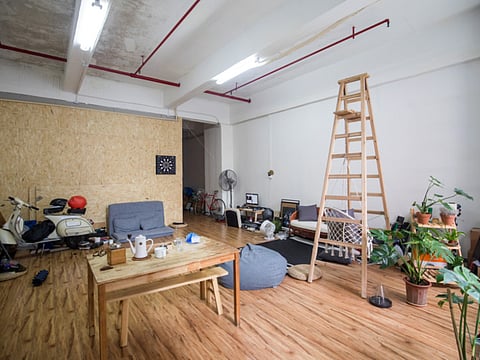Furniture that becomes a fixture
Every item in that tiny apartment seemed to exude so many memories

Most of us take our furniture for granted. They are just chairs and tables, after all, with no personality of their own. But sometimes an odd item of furniture is used so often and so specifically by a member of the family that it acquires a character of its own and we can no longer look at it without seeing that person in it. In our minds, it becomes a fixture and we cannot visualise one without the other.
This happens more and more to us as we say goodbye to loved ones. Suddenly, we are in the unenviable position of wandering around the rooms where parents or aunts or uncles or friends once lived and we can feel their presence in the furniture around us.
Stories spring to mind: how they acquired that sideboard or this desk. What they planned to use it for and what they wound up doing with it …
Everyone made do and everyone was comfortable. The back of an old sofa was unlatched to improvise as a bed or a low, narrow, and not very long settee was dragged out from under her bed or a slim mattress was unfolded on the floor — and a good night’s sleep was almost guaranteed
Thus there was no dining table for our favourite aunt and no low peg table in her small studio apartment. Instead, she used a writing-desk-cum-dressing table (with her writing materials and lotions and powder and lipsticks pushed to the side) to have her meals at and a dainty oval side table to keep her soup bowl or tea cup upon when she lounged around watching television.
There was no extra bed either, given the lack of space, but somehow, every member of the extended family planted themselves at her apartment at some time or the other over the half-century during which she occupied it. The apartment was tiny but the space within seemed infinite thanks to the warmth of the welcome that was extended.
Everyone made do and everyone was comfortable. The back of an old sofa was unlatched to improvise as a bed or a low, narrow, and not very long settee was dragged out from under her bed or a slim mattress was unfolded on the floor — and a good night’s sleep was almost guaranteed.
For those of us who were closest to her, every item of furniture in her home held special significance: the old-fashioned armchair that was pushed around frequently but was excellent to grab forty winks whenever the urge came upon us.
Also Read: Writing down our expenditures
Also Read: Do we actually re-read books?
Also Read: When you are stuck in a time machine
The rounded cabinet that housed the cassettes and CDs that kept the apartment filled with the sound of music; the showcase that held mementoes and memorabilia and stickers that spoke of strength and dignity and a woman’s way in the world; the sideboard where everything that was not used and not needed was piled up so that its elegant lines were disguised and everyone thought of it as just a convenient dumping ground.
We didn’t think about this old furniture at all. We just used it, treated it rather roughly during our frequent visits and never bothered to polish or varnish or paint it when it showed signs of disrepair.
We were occupied instead with the care of our aunt, making sure her meals were nutritious and timely, her doctor’s appointments were kept and her medicines were correctly ingested to keep her fit enough to attend concerts and get-togethers with her rapidly dwindling senior circle of friends.
Then, inevitably, it was all over. Our aunt passed on to greener pastures — and it was left to us to pass on her furniture to those who could best use it.
Suddenly, it was no longer “just” furniture. Every item in that tiny apartment seemed to exude memories and we were loath to undertake the finality of distributing or disposing of it.
So now, much of it is here, in our home, becoming fixtures for us as our “characterless” sofas and settees, bookshelves and sideboards, devoid of decades of such memories, are relegated to the background and forgotten.
Cheryl Rao is a journalist based in India
Sign up for the Daily Briefing
Get the latest news and updates straight to your inbox



